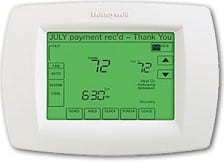Iowa gets smart with new Smart Grid project

.floatimg-left-hort { float:left; } .floatimg-left-caption-hort { float:left; margin-bottom:10px; width:300px; margin-right:10px; clear:left;} .floatimg-left-vert { float:left; margin-top:10px; margin-right:15px; width:200px;} .floatimg-left-caption-vert { float:left; margin-right:10px; margin-bottom:10px; font-size: 12px; width:200px;} .floatimg-right-hort { float:right; margin-top:10px; margin-left:10px; margin-bottom:10px; width: 300px;} .floatimg-right-caption-hort { float:left; margin-right:10px; margin-bottom:10px; width: 300px; font-size: 12px; } .floatimg-right-vert { float:right; margin-top:10px; margin-left:10px; margin-bottom:10px; width: 200px;} .floatimg-right-caption-vert { float:left; margin-right:10px; margin-bottom:10px; width: 200px; font-size: 12px; } .floatimgright-sidebar { float:right; margin-top:10px; margin-left:10px; margin-bottom:10px; width: 200px; border-top-style: double; border-top-color: black; border-bottom-style: double; border-bottom-color: black;} .floatimgright-sidebar p { line-height: 115%; text-indent: 10px; } .floatimgright-sidebar h4 { font-variant:small-caps; } .pullquote { float:right; margin-top:10px; margin-left:10px; margin-bottom:10px; width: 150px; background: url(http://www.dmbusinessdaily.com/DAILY/editorial/extras/closequote.gif) no-repeat bottom right !important ; line-height: 150%; font-size: 125%; border-top: 1px solid; border-bottom: 1px solid;} .floatvidleft { float:left; margin-bottom:10px; width:325px; margin-right:10px; clear:left;} .floatvidright { float:right; margin-bottom:10px; width:325px; margin-right:10px; clear:left;}
The Iowa Association of Municipal Utilities (IAMU) “Smart Grid Thermostat Project” has received grant approval from the U.S. Department of Energy (DOE), which will help put 32,000 advanced thermostats in customers’ homes and businesses by as early as the second quarter of 2010.
The program, which aims to automate electricity use by air conditioners and heating systems on the consumer end, is an effort to reduce electricity use, strain on the transmission grid and the money being spent by consumers and utilities, by avoiding setting new, costly peaks of demand.
Seventy-five municipal utilities, primarily across Iowa (some in Minnesota and Wisconsin), signed on for the project, which has an estimated cost of just more than $12.5 million. As part of the American Recovery and Reinvestment Act the DOE received $4.7 billion to use on “smart grid” projects, of which $5.1 million – 40.8 percent of the project’s cost – will help fund the IAMU project.
“A lot of the value for this project comes from the fact that we are bringing together a lot of little utilities and providing economies of scale that they just wouldn’t have alone,” said the writer of the grant proposal, Bob Haug, executive director of IAMU. “But I believe this project makes sense with or without the grant. What the grant really does is, it provides an incentive for all these utilities to act together, to act now, and to act quickly”
How it works
By installing the 32,000 Honeywell UtilityPro thermostats, utilities will be able to communicate with the thermostats and actually control the temperature in participating homes and businesses.
Utilities have had the ability since the 1980s to try to control peak demand by turning off air conditioning compressors. The difference now, said Haug, that instead of just turning off the unit for minutes at a time, which can lead to large temperature fluctuations, the utilities can specifically lower the temperature by one or two degrees.
During the middle of summer, the demand for electricity increases, which increases the price for the electricity to run air conditioning units. With the new program, utilities can take steps to reduce the large increase in demand by adjusting temperatures in advance of a time period of high demand.
“So you lower the temperature a degree or two in advance of the heating event, you let it rise a degree or two going out of the heating event and the result is you have fewer air conditioners coming on instantaneously during the heating event, and that lowers your peak demand,” Haug said.
Customers generally don’t notice a one or two degree difference, Haug said, and that is actually within the range of error of most thermostats.
How it saves
Every time a utility company needs an additional kilowatt (kW) of capacity, it establishes a new peak, and somewhere on the grid someone has to build another increment of equal generating capacity, Haug said. The customers then must pay for the construction and operation of that generating capacity. The cost per kW of new capacity for a gas-fueled turbine is approximately $820.
During extreme heat or cold, utilities often create new peaks. When that happens, even if the utility only needs the extra capacity for a 15-minute period, it has to pay for hitting that peak for the rest of the year.
Because the new thermostats allow the utility to prepare for peak use, they can often avoid the costs of setting a new peak.
“So that is what it is all about, it is avoiding the setting of a new peak,” Haug said. “Do we avoid a new kilowatt of demand or do we build and supply another kilowatt of demand? And avoiding it is a lot cheaper than building one.”
For each thermostat, it is expected that the utility can avoid the need for 1.5 kW of capacity. Although it is just a small change in temperature, across a large number of homes, 32,000 for example, a large amount of energy and money is saved.
“That is very significant when you think about the cost and the alternative of paying someone to build or building another increment of generating capacity,” Haug said.
Haug said it’s expected that the program will deliver approximately 57 megawatts (mW) – 1 mW is equal to 1,000 kW – of demand control. Beyond the monetary savings – a two-year combined savings of $31.4 million – the system helps remove the 57 mW of strain on Iowa’s transmission facilities, which are already overloaded, according to Haug.
The holy grail
Consumers pay more for their electricity during peak periods of energy use. For example, during off-peak hours, energy from older coal-fueled power plants on the Missouri River can produce electricity at less than 2 cents per kilowatt hour (kWh). But the same electricity during a peak period, on a hot summer day perhaps, can cost nearly 25 cents per kWh.
The software that the 75 utilities will be using could give control to consumers by way of an Internet portal that would allow them to automate when and at what price they are purchasing electricity.
“The customer might essentially leave the following command,” Haug said. “‘If the price of electricity reaches 15 cents per kWh during this time period, turn my air conditioner setting from 76 degrees to 85. If the temperature reaches 25 cents per hour, turn my air conditioner setting to 88 degrees,’ or whatever it might be.”
Dynamic pricing, which means users pay for electricity based on its real cost, is only possible if the utility offers time-of-use rates.
“That is kind of the holy grail of dynamic pricing,” Haug said. “To automate that demand response is really a big deal, because then customers can avoid paying higher costs by shifting their use of electricity to off-peak periods, to lower price periods.”
The Internet portal also allows customers, if they wish, to set cooling and heating levels online and to see how many times the utility adjusted the temperature in their homes.
Also, because all of the thermostats can be communicated with, the utilities can message the thermostats and, for example, alert customers that a critical peak load is possible in the coming days.
How it will be implemented
About half of all the 75 utilities’ residential customers with central air conditioning, and about 25 percent of their commercial customers will be receiving the advanced thermostats.
The approach for implementation will be an opt-out option. Customers that are eligible will be called to set up a time to have the thermostat installed, and at that point they have the option to opt out of the program if they wish. If not, the utility will install the thermostat, explain the value and how to use it, and leave behind an informative DVD.
“An investor-owned utility doing this kind of project would typically do a lot of market research to determine what message its customers want to hear and ask customers to voluntarily participate, and they would keep doing that over and over until they got a sufficient number,” Haug said. “And in our case, we are going to make the case that participation is good for the customer, good for the community and good for the environment.”
The approach means a large difference in the cost and speed at which the program can be implemented, Haug said.
“Instead of several years to get to a critical mass, we will do it in two years,” he said.
The timeline for the project isn’t definite, but it is expected to kick off in January, and Haug said he is going to Arlington, Va., in the coming weeks for the first round of contract discussions with the government. If all goes well, the first thermostats will appear in homes in the second quarter of 2010.
Though there are other similar programs, Haug said the large amount of involved utilities and the opt-out rather than opt-in approach make this program unique. If the program proves successful, Haug feels the program can be replicated in other areas and expanded in the state.
“The incremental cost of adding another utility down the line without any grant money is going to be very economical,” he said. “So I would expect to see the project grow over time as more utilities see the value and install that same technology.”








